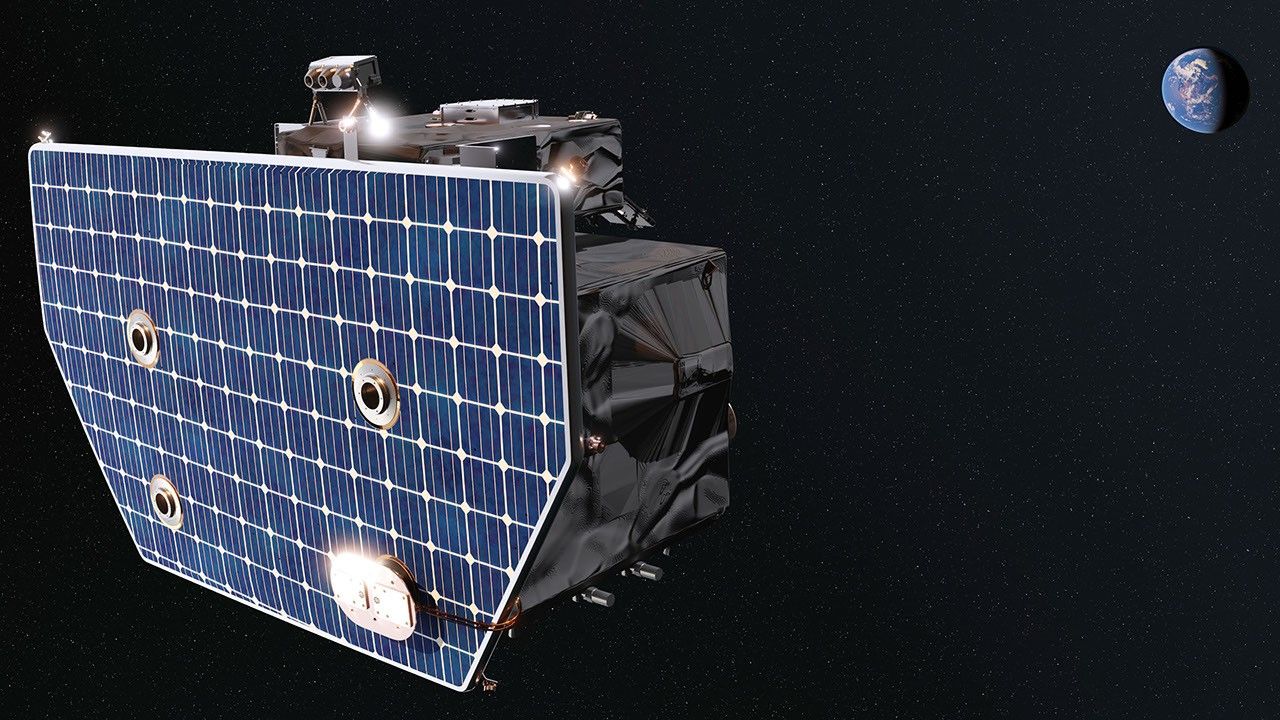In addition to NASA’s IMAP (Interstellar Mapping and Acceleration Probe), two other spacecraft are on the launch pad today, ready for liftoff. The agency’s Carruthers Geocorona Observatory and the National Oceanic and Atmospheric Administration (NOAA) Space Weather Follow On – Lagrange 1 (SWFO-L1) spacecraft will both contribute to increasing our understanding of space weather.
The Carruthers Geocorona Observatory is a small satellite set to operate at Lagrange point 1 (L1), located approximately one million miles between Earth and the Sun. From this vantage point, it will provide continuous observations of the Earth’s exosphere, the outermost part of the atmosphere. Carruthers will use its ultraviolet cameras to monitor how space weather from the Sun impacts the exosphere. Earth’s exosphere helps protect our planet from space weather events, which can impact satellites in orbit, communications signals in the upper atmosphere, and power lines on Earth.
Earth’s exosphere is a cloud of neutral hydrogen that extends halfway the distance to the Moon and possibly beyond. The exosphere is created from the breakdown of water and methane to hydrogen atoms in the upper atmosphere by ultraviolet light from the Sun. The geocorona is the glow of this hydrogen in ultraviolet light, a wavelength called Lyman-alpha. The geocorona has only been globally observed four times prior to this mission. Carruthers Geocorona Observatory is named after the inventor of the first telescope to take a picture of the geocorona, Dr. George Carruthers.
The SWFO-L1 spacecraft also will travel to L1 using a suite of instruments that provide real-time measurements of solar activity. It is NOAA’s first purpose-built space weather satellite. From its vantage point, it will deliver data and that gives operators crucial lead time to implement protective measures for vital infrastructure, economic interests, and national security-both on Earth and in space. This timely information will help safeguard the nation’s power grid, communication and navigation systems, and ensure the safety of astronauts and space-based infrastructure.
NASA and NOAA have important and complementary responsibilities in the development, testing, launch, and operation of SWFO-L1. NOAA, as the Space Weather Program manager provides funding, manages operations, and coordinates the dissemination of data products to users. On behalf of NOAA, NASA’s Goddard Space Flight Center in Greenbelt, Maryland, managed the development of the SWFO-L1 spacecraft, working in collaboration with commercial partners responsible for development and building the spacecraft and instruments.
Launch remains on track for 7:30 a.m. EDT aboard a SpaceX Falcon 9 rocket at Launch Complex 39A from NASA’s Kennedy Space Center in Florida.
More from IMAP (Interstellar Mapping and Acceleration Probe)
